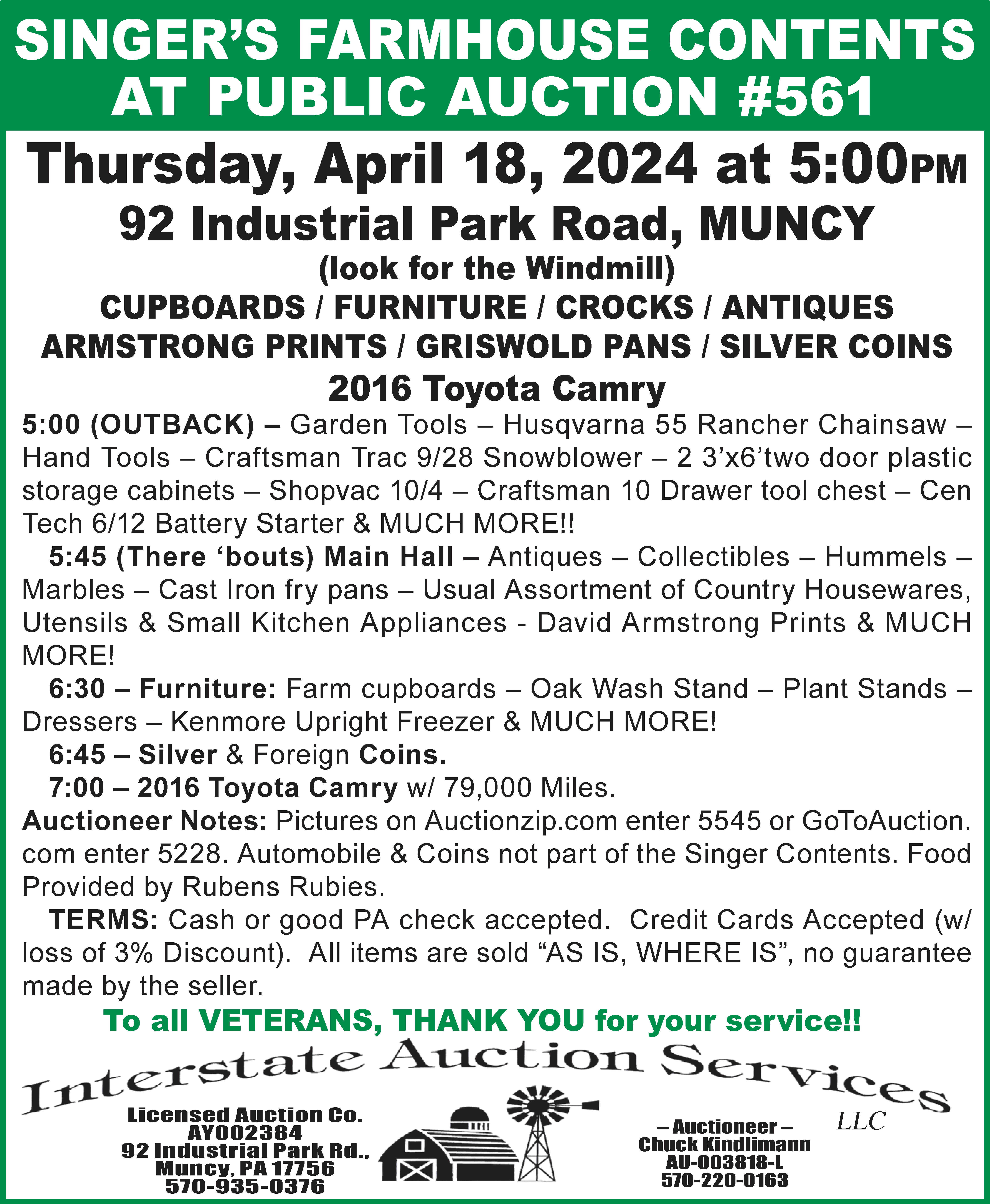It’s that time of year again when reports of bear sightings become more frequent. I’ve already seen a couple of trail camera videos of bears meandering through someone’s yard. One such video was of a bear wandering through a neighborhood in Muncy. I’m also reminded of the situation a few years ago where a bear wandered through the parking area at the Muncy Hospital and went up a tree next to the four-lane highway. I happened to be going by and ended up taking photos of the Pennsylvania Game Commission personnel capturing and removing the bear to a safer location away from the area.
Bears are denned up through the winter months, and you seldom hear of one being spotted. On rare occasions on warm late winter days, a bear may briefly emerge from its den and wander nearby. When bears do leave their dens come spring, they are usually hungry and on the prowl for food. Of course, if I hadn’t eaten anything for three or four months, I would be on the lookout for food, too; in fact, I kind of get that urge to eat just after one night’s sleep. Because of the bear’s ferocious spring appetite, the Game Commission has warned folks to be careful when putting out bird feeders and when discarding other food waste. My plastic garbage can lid bears multiple teeth marks, and more than once, I’ve had to retrieve my waste can from the nearby woods.
Speaking of bears and bear dens, there is some misunderstanding of just what happens when and where a bear dens. Many people think a bear den is a small cave or some kind of overhanging rock ledge, and in many cases, that is true, but bear dens are often not what you expect. A bear den could be a hollow tree, an excavation resembling a bear-sized groundhog hole, an opening underneath some tree roots, or even an open nest on top of the ground. I once photographed a large 400-pound bear denned under a large fallen tree trunk; it was in plain sight all around. Bears often line their den sites with bark, grasses, and leaves, and females tend to pick more sheltered sites than males.
Another misconception regarding bear dens is that bears go into a state of hibernation when they enter their den sites-not so. Hibernation in bears is actually more accurately described as a resting state rather than the deep torpor characteristics of true hibernation. Another interesting factor worth noting is that while in this dormant state, bears do not urinate or defecate. While respiration and heart rate do decline some, body temperature is not greatly reduced; in true hibernation, these factors are greatly reduced. In addition, bears remain alert and are quite capable of protecting their den or fleeing. A number of years ago, I was reminded of this when I moved in closer to the bear denned under the large fallen tree-it looked up at me when it heard a twig snap. Needless to say, I backed off and took my photos from a greater distance.
Female bears with their 1-year-old cubs will den together again the following winter. The family group disbands the following spring when the female is ready to breed again. If you are spotting four of five bears in a group this spring, they are almost certainly in that category.
In the meantime, keep your eyes peeled and keep your bird feeders high and out of bear range.



